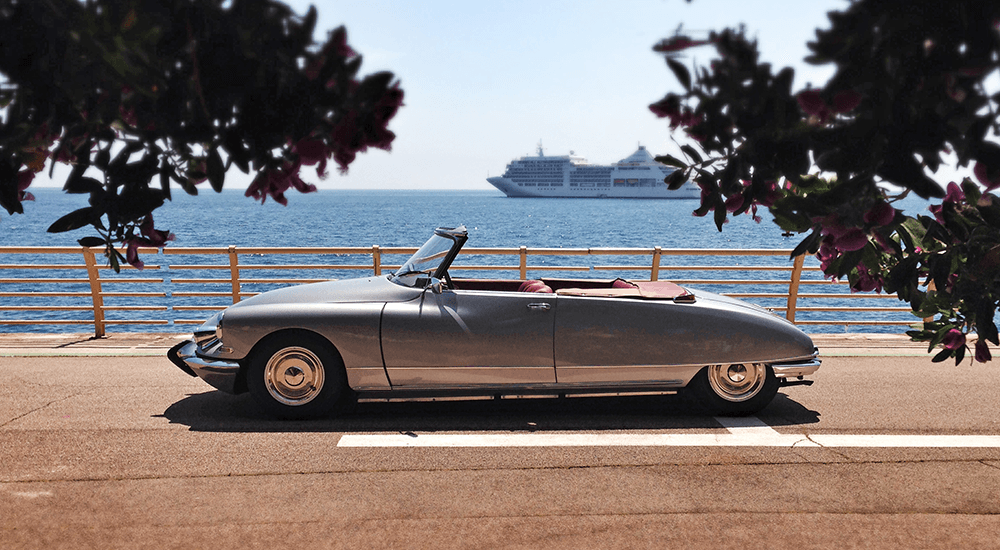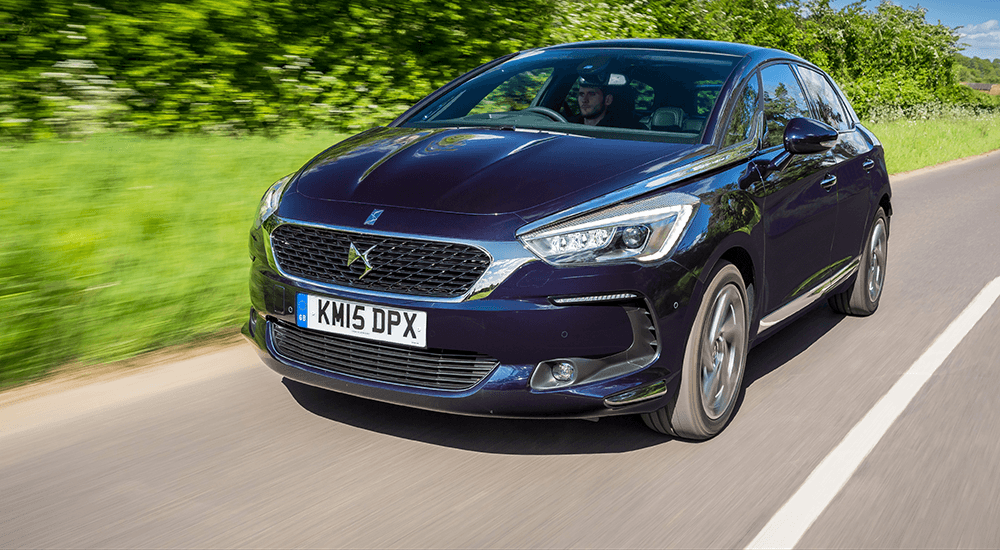DS Automobiles only became a manufacturer in its own right in 2012, initially in China, and then in 2014 in Europe. But DS badges were seen on other cars from 2009, as rebadges, more upmarket Citroen cars.
The brand remains Citroen's premium badge, as Lexus is to Toyota, but has been established as its own brand for only the past decade - and less than that in the UK.
Yet despite the "new manufacturer" going along in what is a very short timeframe in the car world, DS Automobiles can call back on a past with one of the most important cars ever made.
DS Automobiles: a history

The DS badge comes from Citroen's legendary DS 19, a car that came along in 1955 but could still be seen as relatively modern now. It was so far ahead of its time that it created a history only rivalled by the likes of Mini, the Fiat 500, VW's Beetle, and the Land Rover.
Stylish even by today's standards, the DS was available in saloon and estate forms, and was famous for its "magic carpet" ride thanks to hydraulic suspension, as well as other advanced features. They even took it rallying.

The DS is one of those few cars where the term "legendary" is correctly attributed.
From there, the DS badge was used for various updates for a model that was produced for 20 years, before Citroen decided that it was the ideal name to resurrect for its proposed premium models.
The historic French manufacturer launched the Citroen DS5 (below) and Citroen DS3 in 2011 and 2009 respectively.

The latter was a city car, with one eye on capturing sales from helices of Mini, Fiat, and Alfa Romeo MiTo drivers, while the Citroen DS5 was a curious crossover hatchback that was intended to rival the smallest models from the likes of BMW, Audi, and Mercedes-Benz.
When DS was launched as a stand-alone brand proper, any references to Citroen were dropped, and the line-up gradually expanded to include the DS 4 and DS 4 Crossback.
DS Automobiles: the present

DS has been given a brief by Citroen to lead the manufacturer's electrification push, which means that everything in its current range can be bought with an electrified powertrain.
It starts with the DS 3 Crossback E-Tense, the second-generation to use the DS 3 name, though rather than a conventional city car the DS 3 is now a compact crossover, and also only available as a pure-electric model.
It shares a platform, electric motor, and battery pack with other compact Stellantis Group models such as the Peugeots e-208 and e-2008, as well as the Vauxhalls Corsa-e and Mokka-e - the e-2008 and Mokka-e are a very similar concept and size. The DS 3 Crossback E-Tense has a range of up to 206 miles on a charge.

There is now also a DS 4 E-Tense, which is a family-sized hatchback in the VW Golf class, that is fitted with a plug-in hybrid powertrain which will cover almost 35 miles on electric power alone, plus get the support from a petrol engine for longer trips.
It's an often overlooked model, though unfairly so, as many buyers automatically head to the BMW 1 Series, Audi A3, and Mercedes-Benz A Class. Yet for less money and similar levels of refinement, DS overs a distinctly French-looking alternative.
The DS 7 Crossback (above)has recently been given a comprehensive refresh, as it was one of the key models in helping DS separate itself from Citroen in the eyes of buyers.
The family-sized SUV continues the theme of DS looking to offer an alternative to more established names in the market, and is also available with a plug-in hybrid system. This has an electric-only range of up to 40 miles on a charge, and there are two different power levels available for buyers - a 225hp and 360hp set-up.

Finally, the DS 9 E-Tense is a car that has its roots in DS Automobile's Chinese offerings, though has been designed for European markets. It's an alternative to traditional executive saloons from German, British, and Japanese manufacturers, again with two different E-Tense plug-in hybrid options - the 250 version with a range of up to 43 miles on electric power alone, or the all-wheel drive 360 with a shorter electric range (38 miles) though more power on offer.
DS Automobiles: the future

As mentioned above, DS is Citroen's leader in electrification, and as such has been active in establishing itself as a name in the plug-in space. Not only are all its models available as either plug-in hybrid or pure-electric models, but it has also been a racing team in the World Formula E Championship since its second season in 2015-16.
During that time, it has won 14 races, 37 podiums, and four titles (to the end of 2021-22), which helps drive DS Automobiles' future models.
From 2025, all DS models will be launched exclusively with electrified powertrains - either plug-in hybrid or pure-electric. Alongside pure-electric versions of models currently in the range, a new flagship DS is due to be launched in the next year or so, which will be build on Stellantis' new STLA Medium platform. This allows the use of a 104 kWh battery, allowing DS to quote a range of up to 435 miles on a charge. Faster charging speeds and more powerful motors are also capable of being fitted bringing the next DS in line with rivals from the likes of BMW and Volkswagen.

Whether it is a saloon or SUV, we don't yet know - though sensible money should go on an SUV shape, like the concept above and below, for the first model to arrive on the new underpinnings.
There have also been a number of concept cars that hint at DS's performance potential, linking with the Formula E team. There is a chance that a halo performance model could compete with Renault's Alpine brand, and provide electric power to a sportscar offering.
 ,,
,,






